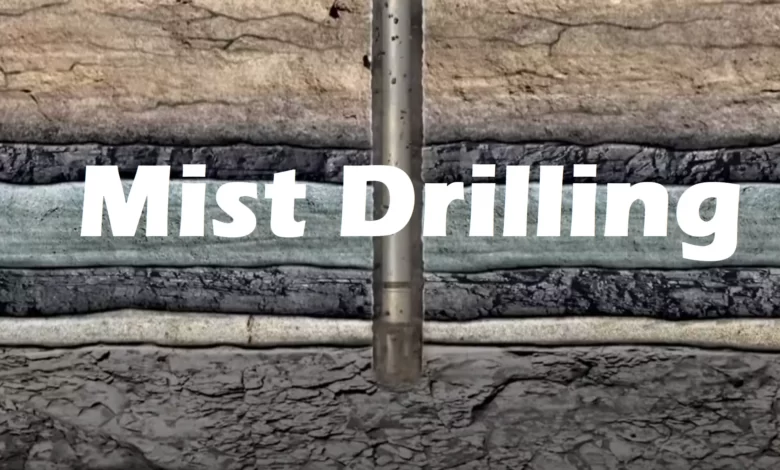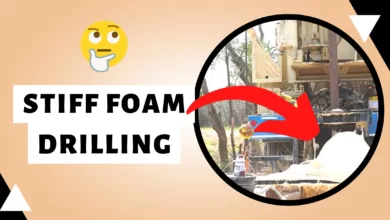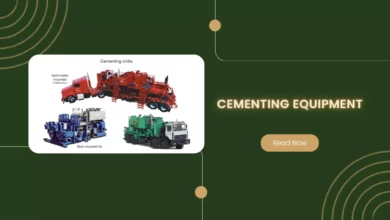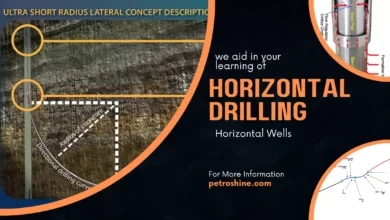Mist Drilling

Overview
Mist drilling is used if only modest amounts of water inflow are experienced during air drilling. A small amount of water is injected into the air stream with a foaming agent. This mixture, together with the produced formation water, forms a dispersed mist phase of independent droplets, which flow at almost the same velocity as the gas phase.
Aerated mud, foam and mist drilling techniques are also called lightened drilling fluids. In these methods, the liquid phase is discontinuous. Since liquid and gases have very different compressibility characteristics, their corresponding volume fractions change easily as the drilling fluid circulates within the well.
Mist and foam drilling have essentially the same components. A mist is formed when the liquid volume fraction is below two percent at a given pressure and temperature. With sufficient water inflow downhole, the liquid fraction can increase and lead to foam formation. The main difference between foam drilling and mist drilling is that in foam drilling the fluid remains foamed throughout its circulation path within a well. Foam drilling also achieves effective hole-cleaning conditions at much lower flow rates compared to mist drilling, since it has significantly higher viscosity than air or mist.
Mist droplets are less dense than cuttings and are usually smaller in size. The presence of droplets in gas does not change the flow properties of air. Therefore, the effective cuttings transport in mist is not more efficient than that of dry air drilling. However, higher bottomhole pressures are observed due to the increased density and additional frictional pressure drop. This actually causes a lower annular velocity for mist at the same volumetric injection rate as dry air. The net result of all these differences is that a higher air injection is necessary in mist drilling, to reach to the same annular velocity values as in dry air drilling.
A modified version of Angel’s analysis can be used to estimate the gas injection rate for mist drilling. Since the liquid droplets travel with the same velocity as the cuttings, we can assume that the total mass of solids carried up the hole is equal to the summation of the cuttings mass entering the well and, the base liquid and foamer injected at the surface. After making all these assumptions, the minimum air injection rate required for efficient hole cleaning for mist drilling can be calculated using Angel’s charts.
Mitchell (1981) developed another cuttings transport model, which included the effects of cuttings and mist on the flow behavior of air. The liquid droplets were assumed to be cuttings with the density of water. His simulations confirmed that the liquid droplets and air travel with the same velocity.
Mitchell included the effect of the flowing air temperature in his analysis. He also demonstrated that the assumption of gas temperature being equal to the geothermal temperature is practically applicable.
According to field experience, mist drilling requires around a 40 percent higher air injection rate for effective hole cleaning compared to dry air drilling. Eventually these high injection rates also lead to higher standpipe pressures (approximately 100 psi more).
Mist is normally generated by the combination of water, surfactant, and a corrosion inhibitor. Stable fine-liquid droplets are generated by the presence of surfactants. Liquid is introduced into the gas flow somewhere between the gas delivery point and the standpipe. Most of the time, the foaming agent and other additives are mixed with water at the pump. Mist pumps are generally available with two compartmentalized tanks on the same skid that are equipped with a simple gauge that indicates barrels of tank volume. Water supplies should be available to fill these tanks. The water from the reserve pit can also be recycled; however, it has to be free from solids and its quality should not interfere with foaming agents and corrosion inhibitors.
It is also possible to use separate water and foamer injection pumps. In this case they are manifolded together in front of the compressors. Check valves should be installed to the delivery lines of these pumps to avoid any air from entering the pumps during operation. An example setup is given in Figure 1.

The surface handling of the formation water needs to be designed carefully in mist drilling. The surface facilities either should be capable of holding large amounts of produced fluids, or a continuous disposal mechanism must be in place. If there is a substantial water influx, foaming might occur in the cuttings pit. It is a good practice to have defoaming agents ready during mist drilling.
In mist drilling, unlike air drilling, the mist pump units are used to mix the foaming additives with air. Liquid additives are much easier to mix in than solids. Typically, powdered polymers used to stabilize shales are the most difficult ones to mix. This mixing can be done in the rig’s premix or suction tank. However, the foaming agents should always be added in the mist tank to avoid excessive foam formation at the surface. Typically, mist drilling requires only around one-fifth of the concentration of foamer that would be needed for foam drilling.
Cuttings and water returns must be carefully monitored during mist drilling. Low returns can be an indication of mud ring formation that might lead to stuck pipe or downhole fires. Water slugging causes the standpipe pressure to fluctuate. It is also an indication of either low gas injection rates or low concentration of foaming agent. Typical foaming agent concentrations are in the range of 0.1 -0.25 percent. If higher foamer concentrations are used, the high viscosity of foam increases the pressure drop in the annulus and causes standpipe pressures to increase.
Water can also accumulate in the hole during tripping operations. Therefore, it needs to be unloaded before drilling can resume, as described in the Dry Air Drilling subtopic.
Mist drilling reduces the risk of downhole fires. It helps to lower the impact of formation water influx on drilling. It is also capable of removing larger water volumes from the well. The major disadvantages of mist drilling are increased air compression requirements, waste water disposal problems, and corrosion of downhole equipment.
The high gas circulating rate of mist drilling increases the possibility of wellbore erosion, especially if poorly consolidated formations are encountered. The aqueous phase of mist drilling can cause wellbore instability problems when water sensitive shales are penetrated.
Water, together with high oxygen concentrations, creates a very corrosive downhole environment. Any ferrous metal equipment downhole will corrode rapidly if no protective actions are taken.
Because of the increased air injection rates, mist drilling requires more compressor capacity than air drilling. This leads to higher daily fuel costs. Large pits have to be constructed to handle anticipated water production. Typical water disposal costs are around $1 per barrel (in 1998). Moreover, various additives used in mist drilling add to the cost of this operation. All these cost-related factors determine whether to use mist drilling or not.
Recommended for You





